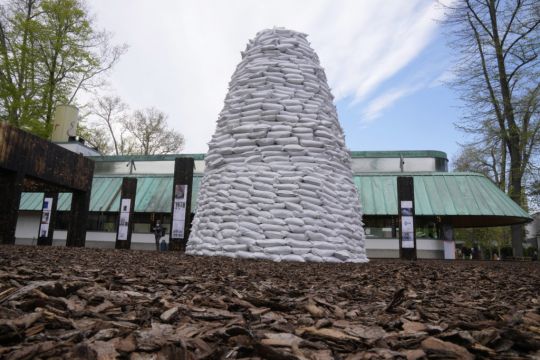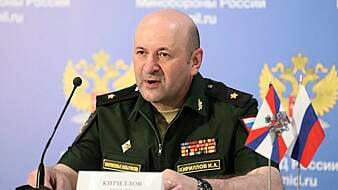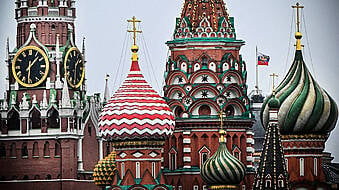Artist Pavlo Makov’s role representing Ukraine at the Venice Biennale has become an act of defiance against the Russian invaders, whose attacks on his adopted home town of Kharkiv have grown more intense in recent days.
Not only do the Russians intend to take over his country, the Russian-born Ukrainian national says, but they are also bent on erasing Ukrainian culture.
“This war in Ukraine is not an ethnic conflict,” Makov, 63, told the Associated Press.
“It is a conflict of cultures. They want to destroy, to demolish, to eliminate Ukrainian culture, so that Ukraine doesn’t exist.”

One of Ukraine’s most important living artists, Makov set off by car for the Biennale in Italy on March 2, squeezing in his wife, two female family friends and his 92-year-old mother.
Missiles flew overhead as they left Kharkiv, he said.
Already, the centre of the historic city, which was the first Soviet capital of Ukraine and is known for its 1920s and 1930s constructivist architecture, had been largely destroyed, including the oblast administrative building and parliament.
Makov left behind his grown son and daughter, who were working as volunteers to help the besieged population – and his lifetime production of artworks.
“There was no question about whether to take art, because there was no room for it,” he said.
“Plus, we were leaving from the bomb shelter, we were not leaving from home or the studio.”
His works have since been evacuated to safer ground in western Ukraine.
Some pieces have already been requested for exhibitions elsewhere.

The copper funnels that comprise his sculpture for the Ukrainian Pavilion were in Kyiv, and were driven out of the country by one of the curators, Maria Lanko.
Another curator, Lizaveta German, escaped with her infant son, who was born in a hospital in the western city of Lviv during a lull between air raid sirens.
Now a month old, he nurses contentedly in the pavilion near the tinkling of falling water.
Makov’s sculpture, titled The Fountain of Exhaustion. Acqua Alta, assembles the funnels into a three-and-a-half metre (11-and-a-half foot) tall cascading fountain against a concrete wall in the Arsenale, which houses the newer national pavilions participating in the world’s oldest and most important contemporary art fair.
The 59th Venice Biennale opens on Saturday and runs until November 27.
Makov’s project was inspired by the lack of vitality he felt as Ukraine transitioned to an independent nation in the early 1990s, and again as he travelled throughout Europe in the 2000s.
“I felt this lack of ability to protect ideas. I felt this dependence on the energy that Europe was receiving from not democratic societies was growing,” Makov said.
This culminated with the pandemic, which the curators said came to represent “the accumulation of exhaustion”, and then the war with Russia.

Now in Venice, Makov finds he is speaking more about the war than about his art.
“It is like a diplomatic mission for us,” Makov said.
“I see myself less as an artist and more as a citizen of my country.”
A short walk away in the Giardini, the Russian pavilion, built in 1914, is closed after the artists withdrew their participation, which had been protested over by the Ukrainian artist and curators.
A letter of protest signed just days after the February 24 invasion underlines the irony that the Russian pavilion was built with money from a Ukrainian art collector, Bohdan Khanenko.
His collection forms the heart of the country’s most important museum of European, Asian and ancient art, which Makov fears may be under threat in Kyiv.
In the Giardini, the Ukrainian pavilion curators – German, Lanko and Borys Filonenko – have created a Ukrainian Piazza around a mound of sandbags, surrounded by posters made during the war by Ukrainian artists.
They include stylised renderings of soldiers using playground equipment for cover, babies whose worried parents have written their birth dates and names in indelible markers on their backs, should the war separate them, and the sinking of the Russian warship Moskva.

“You know, the only dialogue we have now with the Russian culture is on the front,” Makov said.
“No other dialogue exists.”







